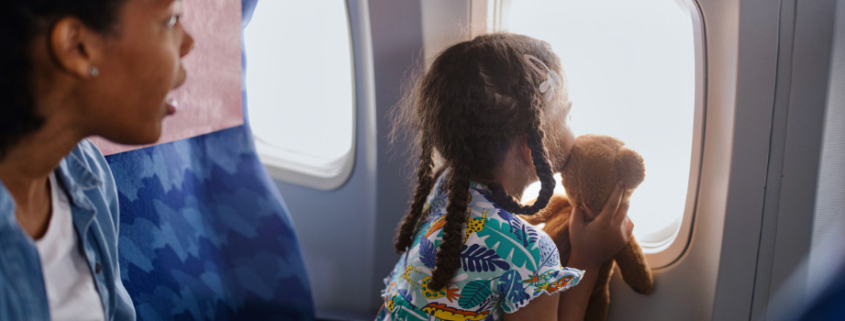Airline travel: The science behind turbulence
Article provided by Scott Stueber, CPCU, CISR, AAI- West Bend Insurance
Each year, nearly 200 million people fly on commercial airlines to see the world or visit family and friends. Since 2017, my family has made it a goal to travel somewhere each year. While many of our trips have been to Europe, there are plenty of great places to visit in the United States.
Luckily, we’ve never experienced severe turbulence, the bumps on our flights do cause some anxiety, especially when hearing, “flight attendants, take your seats.”
To ease my nerves, and hopefully yours, I decided to dedicate this blog to flying and tips to help you enjoy your next flight. In searching for information on turbulence, I found an article titled, “Turbulence: Everything You Need to Know” by Patrick Smith. Patrick is an active airline pilot, blogger, and author of several books. He’s appeared on many radio and television programs.
The article talks about:
- The amount of turbulence a plane can handle.
- Turbulence being a nuisance more than a safety issue.
- A typical conversation between pilots experiencing turbulence.
- The smoothest place to sit on a plane.
- Precautions that are taken to try to avoid turbulence.
Additionally, here are some helpful video resources I found:
If you still need convincing that flying is safe, here are some facts to consider:
- More than six percent of the population fear flying, so you’re not alone.
- The only thing safer than air travel is riding on an escalator or in an elevator.
- Driving to the airport to catch your flight is more dangerous than the flight itself.
- The likelihood of being in an aircraft accident is one in 11 million.
Here are some tips to help you relax on your next flight:
• Take deep breaths.
While breathing is natural, we sometimes need to focus on our breathing. Deep breathing is very beneficial when we encounter different emotions in our lives. Focusing on breathing can help our bodies relax and take our minds off whatever is causing the stress.
• Drink plenty of water.
No matter what you do in life, staying hydrated is essential. Whether running a race or getting ready to fly, it’s important to drink plenty of water and avoid caffeine. If you’re a nervous flyer, caffeine can make it worse.
• Take along a good pair of headphones.
If all the sounds in a plane make it hard to relax, take along a pair of noise-canceling headphones and listen to your favorite music or audiobook, or watch a movie.
• Get a seat assignment near the front.
If you fly regularly, you’ve probably earned a seat assignment in the back of the plane. Let me tell you, there’s nothing relaxing about the smells and sounds in the back of an aircraft.
• Challenge yourself.
Instead of letting fear dictate your life, challenge yourself to overcome it. Consider reading books about flying, taking a class, or seeking professional help. The more you avoid fear, the more powerful and debilitating it’ll become.
• Visualize your trip.
Envision your entire trip in your mind, including driving to the airport, going through security, taking off, flying, and landing. When the day of travel arrives, you’ll be ready to go with confidence.
Sources:







Leave a Reply
Want to join the discussion?Feel free to contribute!